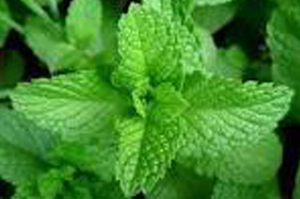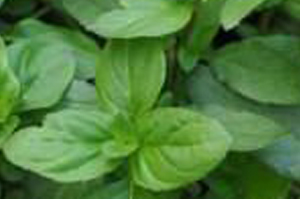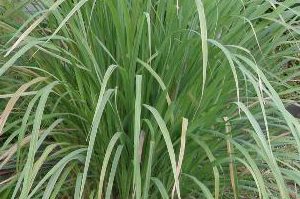
Pudina
Botanical Name:Mentha Arvensis.
Indian Local and common names :-Pudina , Mint ,koshu , horsemint.
Kingdom:Plantae
Division:magnoliophyta
Class:magnoliopsida
Order:lamiales
Family: lamiaceae
Genus: mentha
Nature of Pudina Plant:- This plant is related to the menthe genus and it is aromatic herbs. Many more species grows wild; some of there cultivated. The chief constituent for which these plants are valued are menthol and pappermint oil. This medicinal plant is an erect branched herb upto about 55 cm high. Leaves upto 6 cm long. Flowers small, in small brunches, borne on axile leaves,”medicinal seeds” are also very useful. The dried leaves and flowering tops of the plant make the drug pappoermint, this drugs use in treatment of vomiting and nausea. Bruished leaves are applied in headache and other pains. The main use of drugs is or extraction for pappermint oil and is largely used in medicine for stomach disorders the oil is also “antiseptic” at here is several name of (pudina) like koshu,horsemint.
Ref.: www.medicinal-plants.in

Mint Basil (Tulsi)
A mint plant that smells of Basil – may seen bizarre but actually really nice! A fragrance not to be missed! Hardy perennial.
We recommend growing in a container (as it likes to spread). Likes full sun or partial shade. Likes a well drained soil. Reaches approximately 2 feet (60 cm) tall. If it gets woody, prune it back hard. Pale purple flowers in Summer. Culinary Uses. Excellent for making pesto! Using in salad. Can be dried. Tea. Can be used in oil and vinegar. Medicinal uses has anti-inflammatory properties. Can be used as an antiseptic or for anti-bacterial purposes. Can ease digestion or help stomach upsets (as a tea). Can be used as a mouth wash to help gum infections. Cold tea can be used as an eye wash. Chewing the leaves can help flatulence, heart burn and help combat bad breath. Other uses can deter mice.
Disclaimer :
As with all alternative medicines and plants with purported medicinal benefits it is important to inform your health care providers that you are using them; this helps to ensure safe and coordinated care. We can accept no liability for any side effect or contingency from any allergy or any other cause or harm that may arise. If in doubt please do consult a medical practitioner before using.
Ref.: www.victoriananursery.co.uk

Cymbopogon citrates (DC.)
Tall, perennial herbs, throwing dense fascicles of leaves from a short, oblique rhizome. Leaves are 150 x 1.8cm, green, rough along margins. This is the common lemon grass used to flavour tea decoction. Flg and Frg.: Not Seen.
Chem.: Citral, geranium.
Action/ Uses: Oil and leave: In lumbago, myalgia, chronic rheumatism.

Mogra (Jasmine)
Jasminum sambac is a scrambling shrub, which can grow up to 3 meters. Jasminum sambac has been commonly cultivated as an ornamental plant throughout the world. The stems of this shrubby, evergreen, twining vine are clad in glossy, dark green, pointed, oval leaves which are grouped in opposite pairs or whorls of three. Leaves are shiny dark green. Some of the evergreen leaves are in whorls of three and others are in opposite pairs.
The intensely fragrant, white, waxy flowers resemble miniature gardenias and appear in clusters, although each flower is only about 1 cm in size. Jasmine blooms throughout the summer – and almost continuously in warm climates. The fruits are small black berries, but are seldom formed in cultivation.
Classification
Common Name – Mogra
Botanical Name – Jasminum sambac
Kingdom – Plantae
Subkingdom – Tracheobionta
Division – Magnoliophyta
Class – Magnoliopsida
Subclass – Asteridae
Order – lamiales
Genus – Jasminum
Family – Oleaceae
Distribution
Jasminum sambac is native to southern Asia, in India, Myanmar and Sri Lanka. Jasmine plant is found in almost all the parts of India.
Uses
Jasminum sambac has many medicinal properties like anti-depressant, antiseptic, cicatrisant, aphrodisiac, expectorant, anti-spasmodic, galactogogue, sedative, parturient, uterine etc.
The Jasminum sambac flower is used for removing intestinal worms and is also used for jaundice and venereal diseases. The flower buds are useful in treating ulcers, vesicles, boils, skin diseases and eye disorders. The leaves extracts against breast tumours. The leaves are antiseptic and are useful for wounds or acne when used as a poultice. Drinking Jasmine tea regularly helps in curing cancer.
The dried flowers of Jasminum sambac are used by the Chinese to flavor jasmine tea. Jasmine tea is most commonly consumed with or after meals as a digestive aid.
Jasminum sambac oil is used for making perfumes, creams, shampoos, soaps and incense. Its flowers are used to flavor Jasmine tea and other herbal or black tea. In India Jasmine flowers are stringed together to make garlands.
Jasminum sambac has been cultivated for many centuries as an ornamental plant.
Copyright © 2019 Alpha Agro & Landscape Services. All Rights Reserved.
